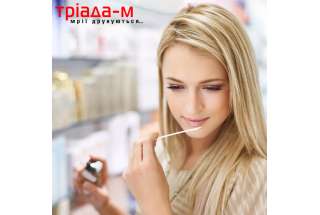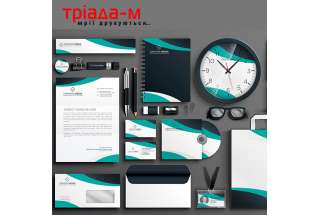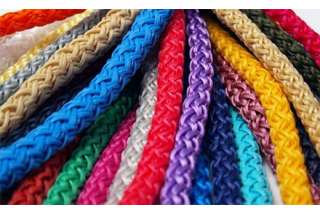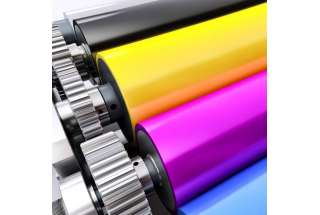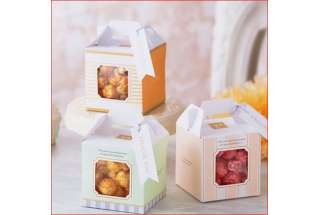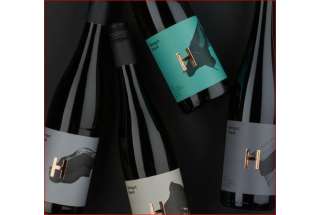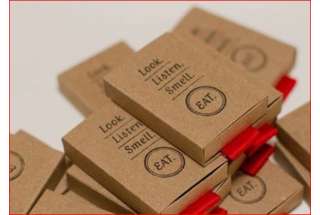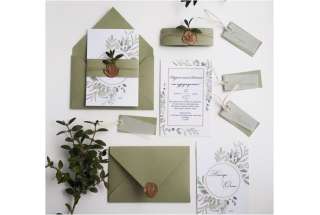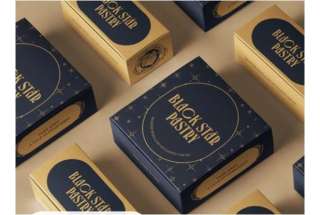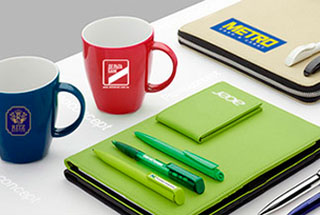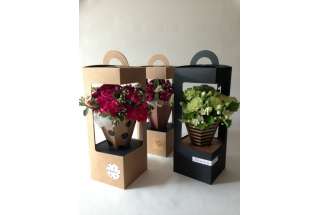Technical requirements for the customer's original layouts for printing
Responsible preprint mockup is the basis of the quality of finished products. Neglecting the rules of prepress preparation can significantly reduce the quality of work in general, and sometimes even call into question the possibility of its implementation! To develop a good layout, it is not enough to simply be able to work in graphic applications, strictly adhere to the rules of prepress preparation in accordance with the technical requirements of specific printing technologies, to know the features of the output equipment, the printing press and postprinting processes; ability to correctly perform scanning, retouch, color correction, etc.
 Original layouts are accepted on any USB drives, HDD, CD or DVD drives PC and Mac formats. You can also send the mockup to e-mail tm@triada-m.com. If the layout archive is too large to be sent as an attachment to an e-mail, then you can send it to us using any free online file sharing service (for example: www.fex.net), then send us an e-mail only link for download
Original layouts are accepted on any USB drives, HDD, CD or DVD drives PC and Mac formats. You can also send the mockup to e-mail tm@triada-m.com. If the layout archive is too large to be sent as an attachment to an e-mail, then you can send it to us using any free online file sharing service (for example: www.fex.net), then send us an e-mail only link for download
Warning! Before sending files over the Internet, regardless of the amount of information, you always need to archive them. This allows you not only to save time by reducing the amount of data that you send, but also provide control over the errors that may occur in the transmission of information. DO NOT USE self-extracting (EXE) archives. All such archives will be automatically deleted by our antivirus software!
SPECIFIC REQUIREMENTS FOR MASTERS DESIGNED FOR OFFSET PRINTING
General guidelines for the preparation of layouts.
Before starting work on the original layout, you must first agree on the technical and production parameters of future products! By default, the preparation of layouts, printing and quality control is carried out in accordance with the international standard ISO 12647-2: 2004 / Amd.1: 2007. Therefore, the maximum paint density in any layout should not exceed 280-330% (depending on the density and type of printed paper). Color profiles for preparing layouts can be downloaded from the official site of the organization "European Color Initiative". From this archive, for the majority of offset work on coated paper, you can use the ISO Coated v2 (ECI) color profile, for fine coated paper - ISO Coated v2 300% (ECI), and for offset printing - PSO_Uncoated_ISO12647_eci.icc.

When designing labels, it is also necessary to take into account the direction of the location of the fibers of the paper (it is essentially important for the automated sticking of the finished labels on the radial surfaces of the package). The text, small figurative elements and signs are recommended (if possible) performed in vector form and not rasterize them because it will lead to loss of clarity. It is not recommended to place small elements in text less than 6 pt "turnkey" on the background of a complex (more than 2 colors) color. The total amount of paint on the front side and back on thin paper should not exceed 500%.
If the installation on the printed sheet (assembly) is performed on its own, then it is imperative to place special scale for quality control of printing. They should be located along the wide side of the sheet (perpendicular to the direction of its movement in the printing press).
To compensate for the error of the cutting equipment, the indents of the significant elements from the edges of the product should be at least 3 mm, and for multi-page products and books - not less than 10 mm. When placing layouts on a sheet, the line of the joint should be imperceptible. If this is not possible, the layouts should be located at least 1 mm apart and have a field of 1-2 mm on each side.
When preparing the layouts of multipage editions for fastening to brackets, it is necessary to take into account the compensation of "pushing" the pages depending on the density of the paper and the method of stitching, as well as taking into account in the layout of the cover the thickness of the root.
WARNING! Matching the colors of the layout that you are viewing on your monitor, the colors that will be created when printing, depends on many factors: the class of your monitor, its correct setting, software settings, etc. Considering these factors is not part of our responsibilities. the company. Therefore, all claims regarding the discrepancy of any colors on finished products with colors that you expect to see, focusing on your monitor - are not accepted! Estimate the actual appearance of finished products to the time of printing can be on the screen of a properly configured monitor in the office of the firm, or by making a color test.
When submitting layouts in the form of colored films.
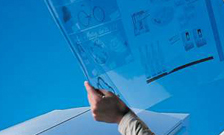
- The films should not have mechanical damage, stains, lines from static discharge, etc.
- The output of films is recommended to perform at a resolution of not less than 2540 dpi and a linearity of not more than 175 lpi.
- The optical density of free space on the film should not exceed 0.4 D, the optical density 100% of the dash is not less than 4.0 D. The
- films must MUST contain: crosses, scales, name of the color of the paint for each film, cutting marks, edging fields 1-3 mm
- Required when removing films, the angles of inclination of the raster should ensure the absence of a mural during printing.
- Recommended color proofs are recommended.
It should be understood that with such a submission of materials, the entire responsibility for the technical preparation of materials and compliance with the standards lies entirely with the customer!
When submitting ready-made layouts electronically. 
- All original layouts are accepted only in a final ready- to-print form.
- The mock-ups must be made in a natural size (M1: 1), taking into account the fields of the trimming on each side of 1-5 mm (depending on the type of product).
- For objects in the right places (black text, thin black lines over a complex background, etc.), the attribute "Overprint" must be set and trapped.
- It is advisable to provide all mock-ups in PDF / X format (PDF / X-3 standard in accordance with ISO 15930-6: 2003 should be preferred), which, in fact, was developed directly for the "blind" exchange of ready-to-print documents in the form of electronic data. For all pages, the image fields must be set correctly: MediaBox - Specifies the physical size of the PDF document page; BleedBox - Used to determine the layout area, taking into account the fields for the trimming. All scales and marks of the cut must be located outside the rectangular area of BleedBox; TrimBox - Specifies the final size of the finished page, which will be formed after printing and finishing processing of products.
- If for some reason the layout can not be written in PDF / X format, it can be provided
- in Adobe Illustrator format (".ai" with the option "Create PDF compatable file") or Encapsulated Postscript (".eps" ) In this case, each file must contain only one layout or page (face or back) with correctly set parameters CropArea (Artboards). It is recommended that before using the layout, all used fonts are converted to contours (more reliable), or use the font font option (Embed Fonts). All triad colors in the layout must be defined in the CMYK model. Extra paint in the layout should be defined as Spot (recommended by PANTONE scale). The use of additional paints should be made individually when ordering. To avoid bugfixes, do not use Spot-Colors in layouts that you know beforehand that they will be printed only as CMYK!
- in InDesign format that was saved using the "Package" function with all the fonts and related images that were used in the layout.
- Raster images are accepted in PSD, TIFF, DCS, Photoshop EPS format (JPG is not recommended!). For color and black and white halftone images: the color depth is 8 bits per channel, the resolution is 270-300 ppi. It is not recommended to place textual content of the layouts that are intended for offset printing in bitmap images (for example, in Photoshop)! Do not leave unused layers or groups in layouts.
- For standard RGB images, we recommend using the standard color space sRGB or eciRGB. In any case, you MUST embed the appropriate working color profile in the image when saving files (option "Embed color profile"). Keep in mind that not all printers can always play all the bright colors of a color from a file in the RGB color space! Therefore, use the Photoshop (Proof colors) features to evaluate the color of the finished product.
- For color separation (getting correct CMYK images) you need to use the correct color profile for the type of printing and materials for which the layout is being developed.
- If the document does not have a built-in color profile, it is automatically assumed that the document is prepared in the color space ISO Coated v2 for CMYK files and sRGB for RGB files.
- It is recommended to apply color (preferably) or black-and-white prints to all layouts.
 Images in other formats (Word, PowerPoint, Excel, CorelDraw, etc.) are not ready-made and are accepted as a thumbnail of the layout (for visualization) or as a source for accelerating work and eliminating text errors.
Images in other formats (Word, PowerPoint, Excel, CorelDraw, etc.) are not ready-made and are accepted as a thumbnail of the layout (for visualization) or as a source for accelerating work and eliminating text errors.
When submitting materials and thumbnails in electronic form.
- Save the files in a format that is essential for the program in which you are developing a layout (Photoshop - .PSD, Illustrator - .AI, CorelDraw - .CDR, etc.) while maintaining the ability to edit (layers, effects, text , contours, etc.)
- Text information is best provided in the form of text files in .RTF, .TXT or .DOC format.
- All primary materials (files, digital images, photos, printed products from which the image scan was performed, etc.) it is desirable to add to the sketch separately in its original form (unchanged).
- It is advisable to transfer the embedded or associated with the working layout image to individual files.
- Use all the fonts to attach individual files or make a list of used headsets (if using these headsets in principle).
- For Vector Graphic Applications (Illustrator, CorelDraw) it is desirable to have a copy of the file whose text fields are translated into contours.
Recommendations for submitting photographic materials to print. 
- In the form of printed photographs on a glossy (not embossed) photographic paper. At the same time, it is desirable that the size of the image on the photo was not less than its future real size on the printed product, but no more than the size of the A4.
- Photographic materials can be presented in the form of negatives or positive: 35-mm film (35-mm slides) with strips of 6 frames or within; frame footage 120/220 (6 x 9 cm); footage footage 4 x 5 inches.
- In electronic form - as a result of shooting with a digital camera. Digital cameras usually offer several image storage formats: JPEG, TIFF and RAW. It is best to favor RAW format. The JPEG format uses a data compression algorithm that has an irreversible loss of quality, so it is not recommended to save the image in this format for printing (more often than not). The TIFF format uses lossless compression, but unlike the RAW format, files occupy more space.
REQUIREMENTS TO MASTERS FOR DIGITAL PRINTING
- A fully-fledged PDF / X file (PDF / X-3 version) should be considered, which includes placing all your images on a printed page (its size should be specified in advance) and Does not require any refinement or correction. In the field of the print page that is specified in the PDF by the MediaBox field (but outside of the BleedBox! Field), all necessary labels and marks necessary for precise repositioning, cutting, edging, cutting, and performing all other postprinting operations must be posted.
- If for the finished product it is important to precisely combine the images from the front and back of the sheet with two-sided printing, then on the printed sheet in the 4 opposite corners on both sides must be placed labels (a cross, a size of at least 3x3 mm and a thickness of line 0 , 2 mm), on which the exact construction will be performed.
- Allowable incompatibility in double-sided printing should be no more than 1.5 mm, which should be taken into account when setting the fields to the cut (not less than 2 mm) when designing and placing layouts.
- The page format (MediaBox) should match the current paper size, given that there is an unpublished 4.5 mm wide field at each edge of the print page.
- Any changes in the layout, scaling, placement on a printed page, stripping, etc. are paid separately as a print preparation service.
- For multipage orders, strip descent should take into account the type of sheet binding, the thickness of the root (depends on the density of the paper and the number of sheets), the size of page pushing (depending on the number of pages in each notebook and type of paper), types of printing material (if there are inserts from different papers) and the order of placing and printing pages of the publication in order to exclude unnecessary additional operations of selection of sheets for cross-linking.
- If the layout of the multipage edition is provided without banding, and there are sheets of different sizes or types of paper in the publication, or there are other factors that create the right conditions for combining these pages when printing (for example, a common printing scheme), then you need to separately provide a list of these pages in the form of ranges (for example: 1-5, 17, 19-28 ...).
- The rest of the requirements for digital imprints fully correspond to the general requirements for offset printing models (see paragraph 3).
REQUIREMENTS TO MASTERS FOR LARGE FORMAT PRINTING (CITYLIGHT, BANNER, POSTER...)
- layouts are taken in fully assembled form in size (M1:1) in TIF, PSD (without additional unused layers and groups), EPS or PDF / X-3.
- The preferred color model is CMYK (color space ISO Coated v2). If the document does not have a built-in work color space profile, it is automatically assumed that the document has been prepared in the color space ISO Coated v2 for CMYK files and sRGB for RGB files.
- Resolution of raster images - 32-72 dpi (for interior printing -150 dpi) depending on the material and typical distance from the observer to the final product.
- The black spot color must be composite (C60 M60 Y60 K100).
- It is advisable to add a printout or a small preview image to the layout. On the printout or in the electronic text, specify all the information necessary for the execution of the order: the name of the layout file, the size of the finished product, the number, material, step and the number of eyelets (if necessary), etc.
REQUIREMENTS TO MASTERS FOR SUBLIMATION PRINT
- Mockups are accepted in ready-made form in size (M1:1) in TIF, PDF, EPS, JPG format. The color model is RGB or CMYK, but with a built-in color profile.
- If the document does not have a built-in color profile, it is automatically assumed that the document is prepared in the color space ISO Coated v2 for CMYK files and sRGB for RGB files.
- The minimum resolution of raster images depends on the smoothness of the surface structure of the application material and ranges from 30 dpi (for example, for artificial fur) to 300 dpi (for shirts or ceramics).


